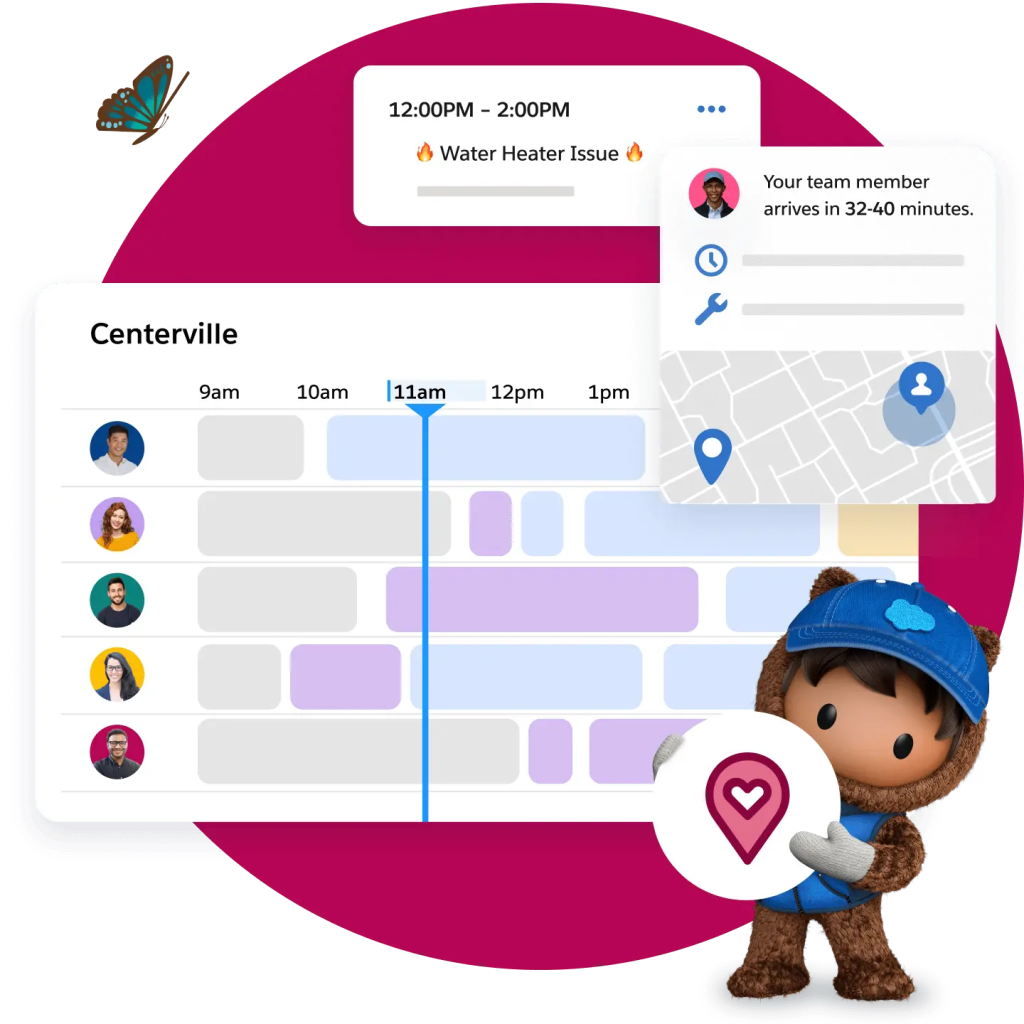
The Essential Guide to the Mobile Workforce in Field Service
Explore what a mobile workforce is, its benefits, and tips for choosing the right mobile workforce management software for your field service business.

Explore what a mobile workforce is, its benefits, and tips for choosing the right mobile workforce management software for your field service business.


A mobile workforce performs their duties remotely, away from a traditional office setting. Equipped with mobile devices, apps, and digital tools, mobile workers bring flexibility and efficiency to businesses, especially in field service.
Understanding how to effectively manage a mobile workforce in field service is critical to delivering an excellent customer experience. Our research finds that 74% of mobile workers say that customer expectations are higher than they used to be.
We'll look at the benefits and challenges of managing mobile workforces in field service and how technology — especially AI and automation — can help your team become more efficient and productive.

Learn what high-performing service teams are doing with AI and automation to boost field service productivity and customer experience.
A mobile workforce is a team of remote employees and contractors who use cloud-based apps and software on smartphones, tablets, and laptops to perform their job duties from any location. This model is used in industries that require flexibility and on-the-go operations, such as field service.
Mobile workers include field service technicians, consultants, project managers, professional service providers, among others. They use mobile technology to stay connected, access information, and complete tasks from anywhere.
The value of a mobile workforce lies in its ability to enhance operational efficiency, improve customer satisfaction, and adapt to changing work environments. Mobile workers can respond quickly to customer needs, provide on-site services, and maintain productivity regardless of their location. This flexibility is essential in today's fast-paced, field service business landscape.
With a mobile workforce, your business can:
Effectively managing a mobile workforce requires a strategic approach and the right tools. Here are a few to consider:
To optimize the performance of your mobile workforce, consider implementing these standard practices:
Implementing a mobile workforce offers numerous benefits, including:
Despite the many benefits of a mobile workforce, managing it comes with its share of challenges. These can include:
Mobile workforce management software helps field service organizations manage and coordinate their distributed teams — both employees and contractors. Powered by data and AI, this software contributes to benefits like maximized efficiency and increased customer satisfaction
Solutions such as field service management software can be tailored for mobile workforce needs, with features like scheduling, tracking, communication, and performance management. These capabilities help teams stay connected, informed, and productive with efficient coordination and real-time updates.
AI-powered solutions like field service automation can streamline routine tasks, provide intelligent insights, and enhance the overall efficiency of mobile workforces. For example, features like intelligent scheduling factor in worker availability, location, skills, and job requirements, and automate scheduling for field service managers. This not only saves time but can increase productivity and customer satisfaction. AI can also help with monitoring performance metrics, identifying trends and areas for improvement.
Selecting the right mobile workforce management software is crucial for seamless operations. Consider the following factors when deciding on the best solution for your team:
Comprehensive mobile workforce management solutions are designed to streamline your operations. They provide managers with the tools they need to oversee teams effectively and keep customers happy.
Look for field service management software, like Salesforce Field Service, that includes features for dispatch management, scheduling, tracking, communication, and reporting. Prioritize capabilities such as task assignment, real-time location tracking, timesheets, and analytics to keep up productivity and identify ways to improve.
AI and the ability to operate offline are must-have features for your field service management. AI-powered tools, such as External Knowledge Search Answers, augmented reality, mobile quoting and document builder, and Salesforce Pay Now, help your mobile team be even more efficient in the field. With offline mode, your field service team can still be productive even when there’s no connectivity.
Choosing a solution that is user-friendly and includes a mobile app is crucial. Not only can this streamline operations for mobile teams, but it can enhance the customer experience by meeting them where they are. A user-friendly and intuitive interface can help reduce the learning curve for employees and empower them to navigate the software efficiently. Look for software that offers in-app communication between customers and service teams, enabling seamless interactions and quicker issue resolution.
Ensure the software you choose can integrate with your existing customer relationship management (CRM) and enterprise resource planning (ERP) systems. This way, there’s only one app to conduct all tasks and see all customer, asset, and work order information.
Plus, compatibility with current IT infrastructure can not only enhance efficiency but reduce disruptions. Look for software that offers API integrations with your existing systems and tools.
Scalability
Select a solution that can grow with your business and adapt to changing needs. As your mobile workforce expands, the software you choose should be able to handle increased data, users, and operational complexity. Consider the vendor's reputation and support services to ensure long-term reliability.
Successfully managing a mobile workforce requires a strategic approach and the right technology to support your team. You can enable your mobile teams to thrive by fostering a culture of clear communication, collaboration, accountability, and continuous learning.
Ultimately, the key to success lies in striking a balance between empowering mobile workers with the necessary resources and maintaining a cohesive, connected workforce. As the future of work becomes clearer, embracing the mobile workforce model with a strategic and adaptable approach will position your business to stay competitive and meet the ever-changing demands of customers, employees, and contractors.

Make sure your customers get fast, complete service from start to finish. This starts with the right field service management solution with AI.